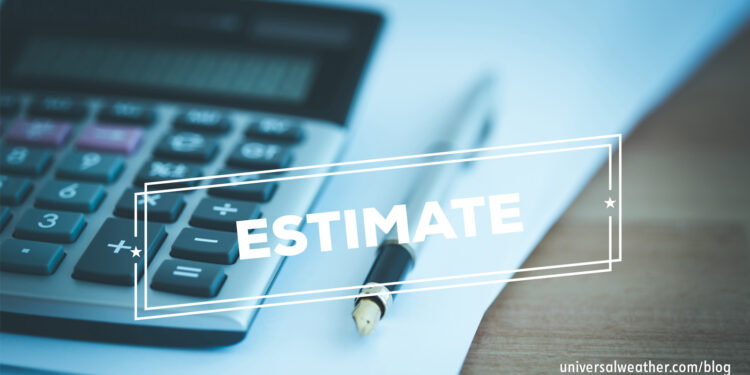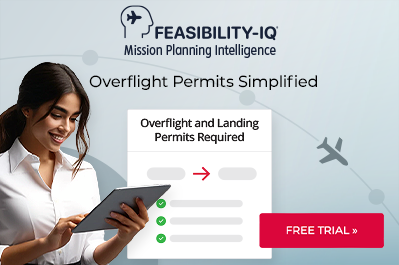Estimating Costs of your BizAv Trip – Part 1: Cost Considerations

This business aviation blog post is part of a series on estimating costs for a trip.
Early in the trip planning phase many business aircraft operators like to pre-calculate estimated trip costs. Accuracy of such pre-trip cost estimates is highly dependent upon the operator providing as full and accurate details on trip schedule and services needed as possible. Done correctly, a trip cost estimate should reasonably reflect day of operation costs of an international trip—barring any last-minute changes or unforeseen events which may arise.
The following is an overview of what you need to know:
1. Trip estimates vs. trip quotes
A trip cost estimate is an approximation of variable costs for services based on advance information provided by the operator. A quote is a firm pre-determined cost for services that an operator can rely on as being the final cost for particular services. Some trip cost estimates can be more variable than others. Often, it’s more difficult to estimate costs of 4th-party services – including in-flight catering, local transport and hotels – as these depend upon time of year and high-traffic local events that may be taking place. Cost estimates for remote locations can be challenging, particularly when information is not readily available or may be hard to obtain. For example, lesser used destinations in Africa are often more difficult in terms of trip cost estimates, as the information needed for those locations may not be readily available.
2. Taking advantage of trip cost estimates
Based on what we’ve seen, trip cost estimates are requested for about 30% of proposed international trips. These requests for estimates are made by both private non-revenue and charter (non-scheduled commercial) operations. Sometimes operators request post trip cost estimates, or estimates for the cost of cancelling a proposed trip. In order to generate the most accurate trip cost estimate, it’s imperative that operators provide as much information in advance as possible.
3. Required information
For the most accurate trip cost estimate be sure to provide your aircraft type and maximum takeoff weight (MTOW), locations you’ll travel to and length of stay, schedule, proposed routings (this impacts navigation fees and permit requirements), number of passengers, and fuel uplift requirements. Be sure to specify if you’re seeking an estimate for full services, partial services, or simply a general estimate for selected locations only. Note that ground handling fees, together with service levels, can vary greatly at a particular airport, so you’ll need to factor in cost vs. service considerations. Keep in mind that if a trip estimate is obtained far in advance – months or perhaps a year ahead – prices may increase.
4. Cost considerations
MTOW can play a big factor in terms of costs as many airport fees are based on weight. Navigation fees vary widely depending upon route. Flying from Anchorage to Japan, for example, will be cheaper if you avoid Russian airspace – due to the higher navigation fees and additional permit requirements. Overflight and landing fees may be flat fees or variable charges, depending upon the country. Multiple charges are usually associated with each airport. In addition to ground handling and aircraft parking fees, you’ll need to consider possible noise/emission surcharges, overtime charges, and fees for optional aircraft services. There are locations, such as India where you’ll be charged a fee based on any fuel you tanker in, if your next leg is domestic, and fuel tankering information must be provided in order to obtain the best cost estimate.
5. Regional cost variations
Brazil has high aircraft parking and navigation fees, with landing fees based on aircraft MTOW and size class. Navigation fees for Russia are high – up to several thousand dollars. China charges compensation fees – of several thousand dollars – to land in country. Mexico charges SENEAM fees for both overflying and landing in the country. SENEAM fees, for overflight, are based on length of flight and wingspan. However, the SENEAM fee will be attached to fuel charges whenever you uplift fuel in Mexico, based on wingspan (thus not being charged a separate navigation portion). Most countries charge passenger taxes and there may also be customs and immigration fees to consider. In April 1, 2014, the UK implemented the Air Passenger Duty (APD) charge. Certain airports charge additional fees for operation of Stage 2 aircraft and this can increase costs for some operators. Examples of airports that impose Stage 2 noise fees include Heathrow (EGLL), Stansted (EGSS), London City (EGLC) and Munich (EDDM).
6. Parking charges
Depending upon the destination, aircraft parking may be charged by size (length x width), size category or MTOW. Parking costs can range from a few dollars per day to over 1000 USD per day. In Japan, for example, navigation and handling fees are very high but parking costs are cheap. In Brazil, however, aircraft parking is typically very expensive. Be aware that at some locations – including Nice (LFMN) and Vnukovo (UUWW) – parking rates escalate the longer you stay. At LFMN, for example, parking costs can run more than 1000 USD per day after a stay of 72 hours. At some very expensive locations you may want to consider repositioning and parking at an alternate airport.
7. Additional notes regarding estimates
It’s important to factor in a certain percentage rate for the overall cost in case there are services originally not accounted for. It’s recommended that at least 10% be added to cover for those additional services. Also, every change to a trip can significantly alter an estimate, thus making it very important to always request a revised estimate based on those changes.
Closing Thoughts
Keep in mind that changes to schedule, aircraft and required destination services can significantly impact actual trip costs. With any trip cost estimate it’s best to factor in 10% or so overage to take into account price increases and additional charges that may be incurred en route.
Questions?
If you have any questions about this article or would like an estimate for your next trip, contact me at fredquinonez@univ-wea.com.
Stay tuned for Part 2, which covers more trip cost estimate considerations.




